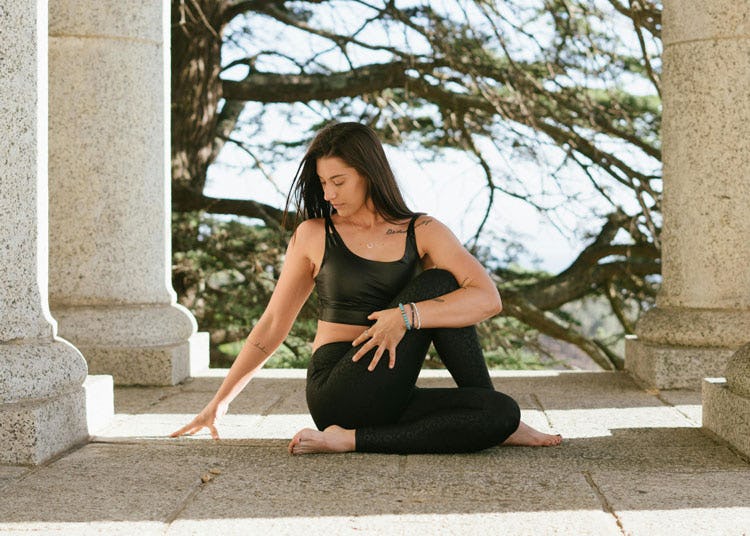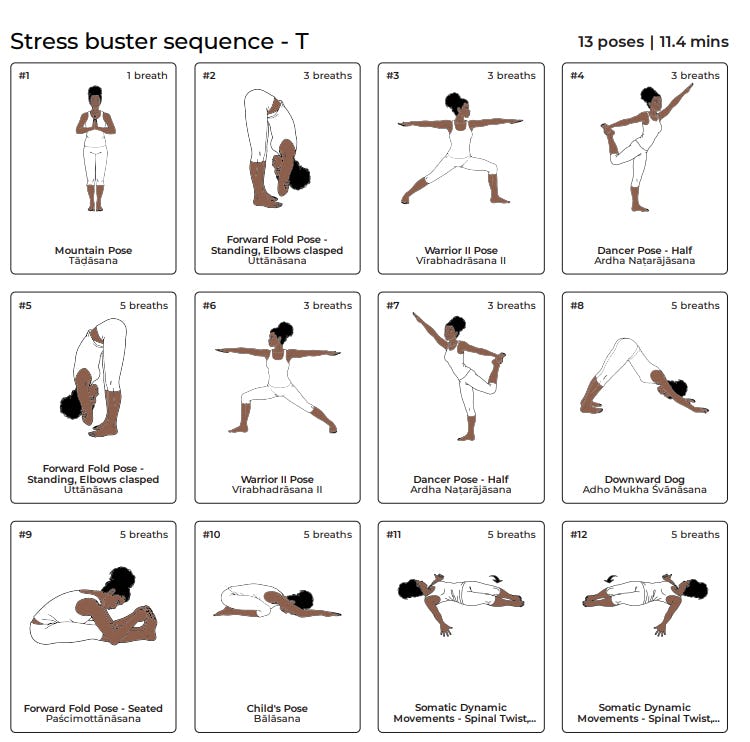Yoga Therapy Sequencing with Abhyāsa and Vairāgya
From Fire to Peace: A Yoga Journey for the Agitated Mind

In the realm of Yoga therapy, where the intertwining of ancient philosophy and modern practice is vital, sequencing is more than an arrangement of postures—it's a journey through the 'self.' Drawing upon the time-honored principles of Abhyasa (dedicated practice) and Vairāgya (non-attachment) from Yoga philosophy, we find an approach to Yoga sequencing that not only attends to the physical ailments but also nurtures the individual's spiritual wellbeing.
Abhyāsa: The Steadfast Journey Through Asana
Abhyāsa, or steadfast practice, is the persistent effort to maintain a state of tranquility and focus in both mind and body. In the context of Yoga therapy, sequencing based on Abhyāsa involves creating a structure that promotes accessibility, consistency, and depth, which can be likened to the regular cultivation of a garden; each posture is carefully selected and placed, allowing for a gradual build-up of strength and flexibility, just as a gardener nurtures growth over time. For instance, starting with grounding and dynamic postures that can establish a sense of stability is essential for those dealing with anxiety or unresolved trauma and progressively moving towards more challenging asanas that require focus and dedication.
Vairāgya: The Art of Letting Go in Transition
Vairāgya, on the other hand, teaches the art of non-attachment. It reminds us that while we may have a destination or goal, the journey is not linear. This principle can guide the transitions between postures in a Yoga therapy session. By infusing mindfulness and breath into the movement, we encourage a release of tension and resistance, facilitating a smoother flow of energy. Just as Abhyāsa may represent effort and the build-up, Vairāgya is about the release, finding ease even amid effort, which is especially therapeutic for those experiencing physical or emotional stiffness or blockages.
This balance between effort and ease informs our translation of the word "āsana" in our pose encyclopedia:
āsana= seated; to be in a posture that balances effort & ease; abiding,
dwelling place.
Balancing Energies: The Interplay of Opposites
Ancient wisdom, like the concept of the Pañca Mahābhūta (five great elements), suggests that our wellbeing depends on the balance of elemental energies within us. In crafting sequences for Yoga therapy, we consider the qualities of each element—whether one needs the grounding of Earth, the fluidity of Water, the vitality of Fire, the movement of Air, or the spaciousness of Ether. A sequence may begin with firm, earthy postures that evolve into more fluid movements, stoke the inner fire with powerful core work, and conclude with airy, expansive asanas and deep breathing to create a harmonious state.

The Therapeutic Narrative: Crafting a Healing Story
Every Yoga therapy sequence created for a client tells a story, and each story is tailored to the individual's needs. Just as the ancient texts offer parables and teachings for personal reflection and growth, a therapeutic sequence can be a narrative arc that leads the practitioner from their current state toward a desired feeling or realization. By understanding the principles outlined in ancient scriptures, Yoga therapists can create sequences that address physical concerns and support emotional and spiritual healing.
A Tribute to Tradition in Modern Practice
In the art of sequencing within Yoga therapy, incorporating ancient principles like Abhyāsa and Vairāgya brings a depth that transcends physical exercise. It's a holistic approach that honors the wisdom of our Yogic sages, offering a path to balance in this modern era. As we delve into the ancient texts and draw inspiration from them, we can create a therapeutic practice that speaks to the body, mind, and spirit, guiding each individual toward a harmonious state of wellbeing.

